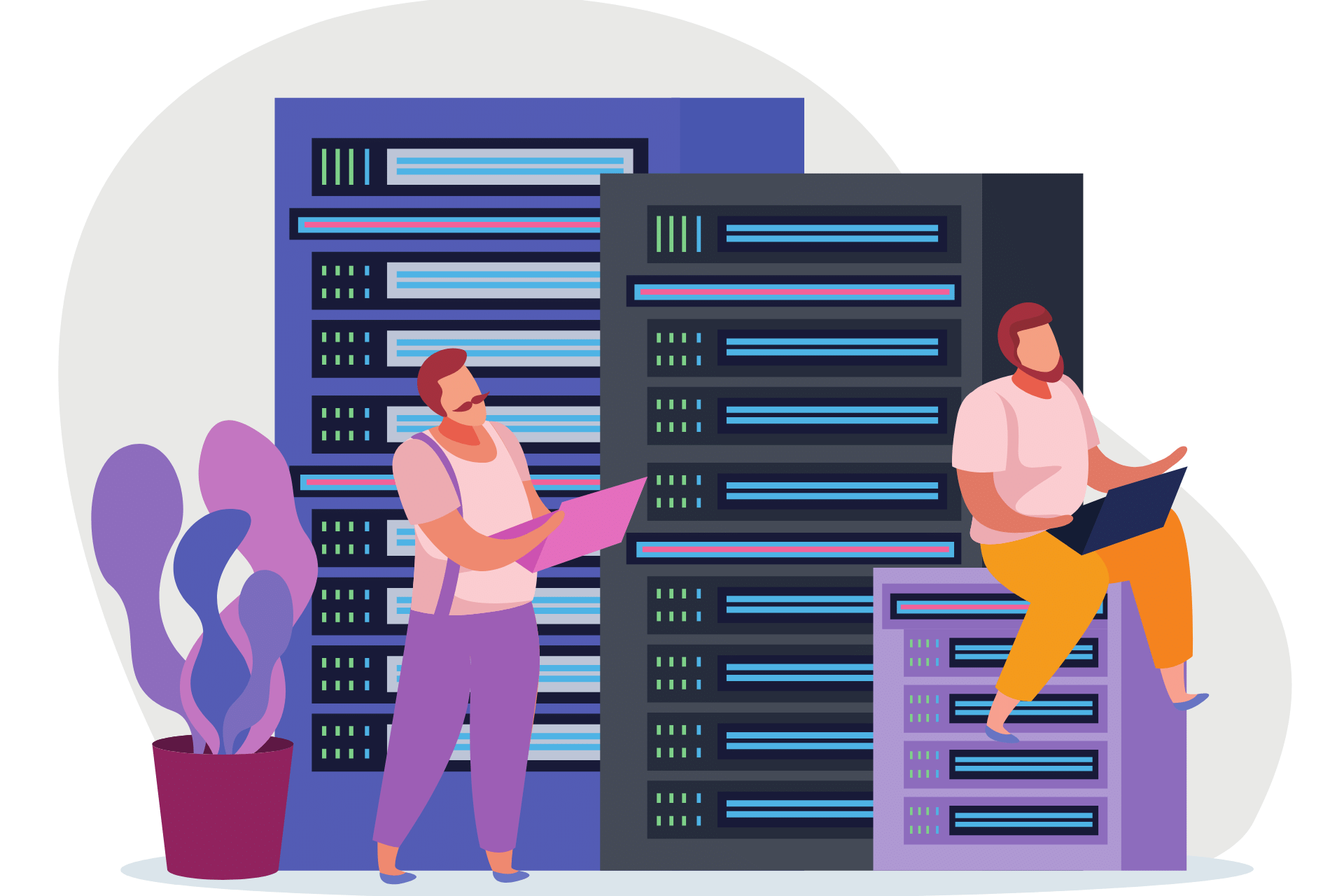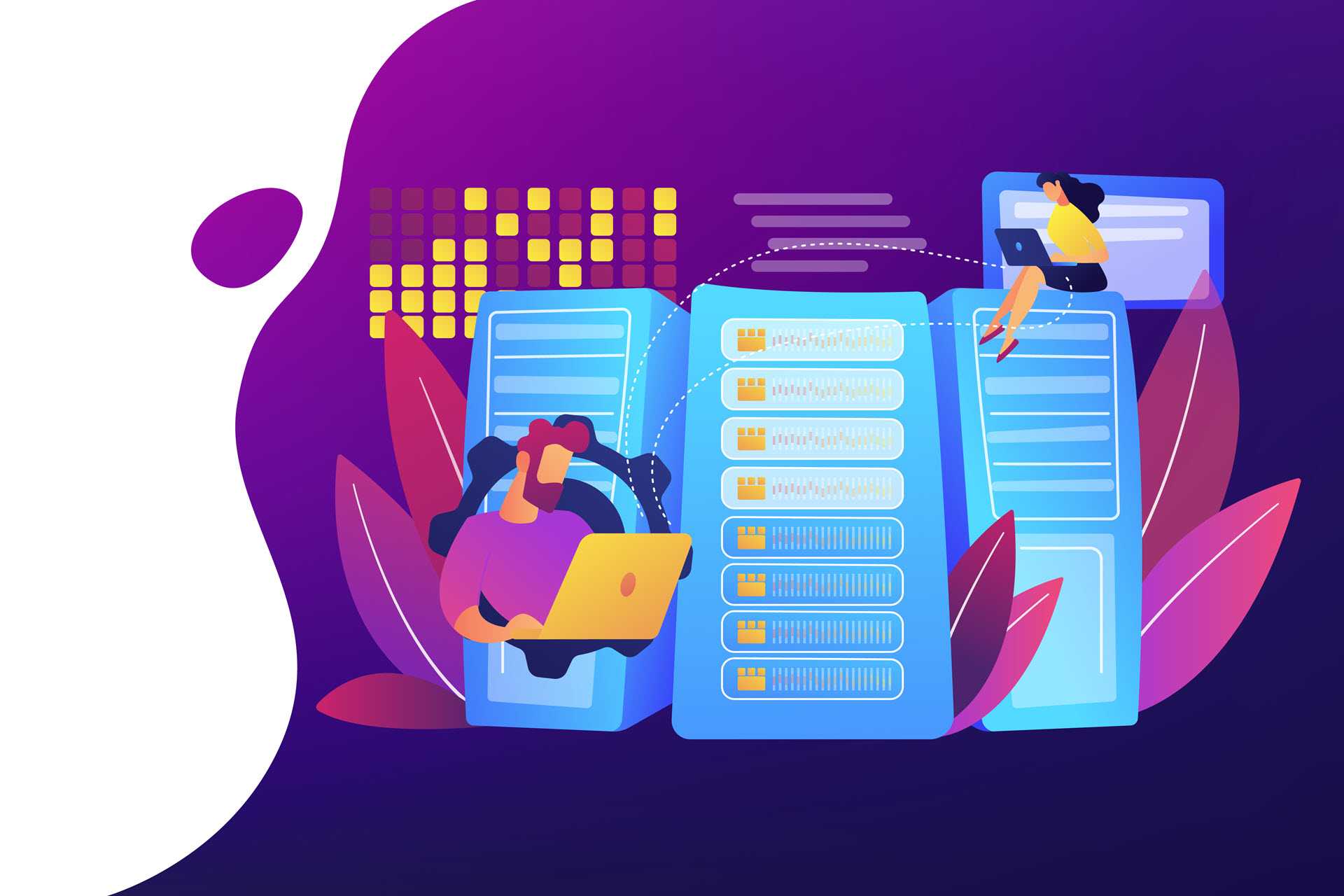Running an in-house server is complex, time-consuming, and expensive. Many organizations decide that renting a server makes more sense resource-wise since leasing has no upfront expenses and does not require a dedicated IT staff.
However, renting a server carries its own challenges and trade-offs, so it's vital you know what you're getting into if you decide that leasing hardware is the best choice for your use case.
This article is a complete guide to renting a server that takes you through every step of the leasing process (choosing specifications, negotiating with providers, picking add-on services, etc.). We also present the different types of servers available for rent to ensure you understand your options when leasing hardware.
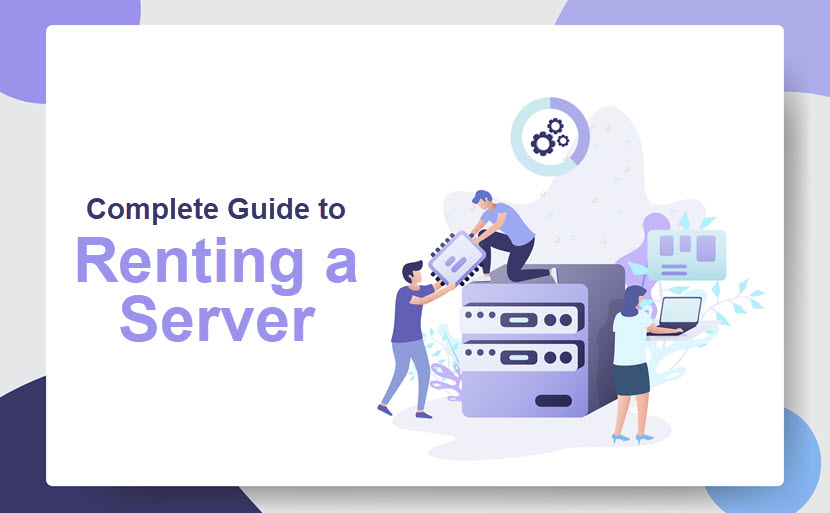
On the market for a new server? Check out our wide selection of dedicated servers and see which one is the best fit for your workloads and IT priorities.
What Does It Mean to Rent a Server?
Renting a server is the practice of leasing a bare metal or virtual server from a third-party data center. The user pays a monthly or annual fee for the hardware while the hosting provider takes on most server-related responsibilities, such as:
- Procuring and maintaining equipment.
- Setting up the server according to client specifications.
- Providing the necessary infrastructure (racks, power supply, cooling, physical security measures, etc.).
- Ensuring the server has reliable network access.
- Performing routine server maintenance tasks (hardware upgrades, firmware updates, patch management, etc.).
- Monitoring and keeping the server safe.
- Responding to incidents and alerts.
Here are the most common reasons why companies decide to rent a server instead of investing in on-site hardware:
- Lower costs. Renting a server eliminates the need for upfront capital investments in equipment and a server room. Instead, clients pay a predictable ongoing fee for as long as they need the server.
- Offloaded management. When you rent a server, the provider's team takes on most (or all) server management responsibilities.
- Top-tier hardware. Renting a server from a top vendor grants access to high-quality computing resources that most companies cannot afford on an in-house level.
- Simple and inexpensive scalability. Teams easily scale the resources of a rented server to fit current needs. You upgrade or downgrade capacity far more quickly than with on-site hardware.
- Better reliability. Hosting providers offer robust infrastructure with redundant power supplies and backup systems to ensure high availability and server uptime.
- High levels of security. Hosting providers invest heavily in keeping their servers safe. Most data centers have advanced firewalls, intrusion detection systems, automatic data backups, and disaster recovery plans (all of which cost a fortune to deploy in-house).
Should I Rent or Own a Server?
The choice between owning and renting a server depends on your budget, in-house resources, and IT needs. Both options have trade-offs, as shown in the table below:
| Point of comparison | Renting a server | Owning a server |
|---|---|---|
| Main selling point | Avoid high upfront investments and enjoy high levels of flexibility | Own and be in complete control over your server |
| Upfront costs | Low (no hardware purchases) | High (must buy hardware and equip a server room) |
| Ongoing expenses | Recurring monthly or annual rental fees | Power, regular maintenance, occasional upgrades, and a dedicated IT staff |
| Customization | Limited (dependent on the hosting provider's offerings) | Complete control over hardware and software |
| Server maintenance | The hosting provider handles maintenance and updates | Full responsibility for maintenance and updates |
| Control over infrastructure | Limited | Full |
| Root access | Depends | Yes |
| Performance expectations | Depends on the server type and infrastructure | Excellent due to dedicated resources |
| Scalability | High | Limited (capacity tied to owned hardware) |
| Security responsibilities | Shared with the hosting provider | Full |
| Backup and Disaster Recovery (BDR) | Providers offer backup and DR services (typically for an extra fee) | In-house staff must define and implement BDR solutions |
| Hardware redundancy | Top-tier redundancy | Depends on the setup (more redundancy means higher expenses, though) |
| Technical support | Provided by the hosting provider | Internal IT staff or outsourced technical support |
| Hardware lifespan | Not a factor | Hardware becomes outdated and reaches EOL over time |
| Vendor lock-in concerns | Considerable | No risk |
Remember that renting and owning servers are not mutually exclusive strategies. You can rent one or more servers while still running some on-site hardware–it's all about finding the right fit for each individual use case.
What Types of Servers Are Available for Renting?
There are two general types of servers available for rentals:
- Cloud servers: Cloud servers are virtual servers that run in a cloud computing environment with abstracted resources separated by a hypervisor. These setups offer near-instant resource deployments, pay-as-you-go billing, and various orchestration and automation options (e.g., auto-scaling).
- Dedicated servers: Dedicated servers are physical servers rented out to users for exclusive use. These traditional setups do not use virtualization and provide access to raw hardware (CPUs, GPUs, hard drives, network cards, etc.). Dedicated servers offer high performance, security, and customization.
Our cloud server vs dedicated server article offers an in-depth comparison of the two server types.
In short, cloud servers' main selling point is high scalability (up and down), and these servers are an excellent choice for:
- Business applications that require rapid deployments.
- Mission-critical systems that need uninterrupted hosting.
- Email servers.
- E-commerce hosting with seasonal spikes in traffic.
- Smaller apps with unpredictable usage levels.
- IaaS, PaaS, or SaaS hosting.
On the other hand, dedicated servers excel at consistent performance and customization, which makes them ideal for hosting the following use cases:
- Business apps that require high CPU processing, RAM, and disk space.
- Large websites with consistently high traffic.
- Multiplayer game servers with a high player count.
- Stable apps with rare usage spikes.
- Databases that host sensitive user or corporate data.
- Big data analytics.
No one is forcing you to choose between consistent performance and high scalability. Our Bare Metal Cloud is a unique single-tenant dedicated server with cloud-like capabilities for adding and removing resources.
How to Rent a Server
Now that you know whether the benefits and trade-offs of leased servers align with your IT strategy, it's time to figure out what type of server you need (and who to rent it from). Below is a step-by-step guide to renting a server.
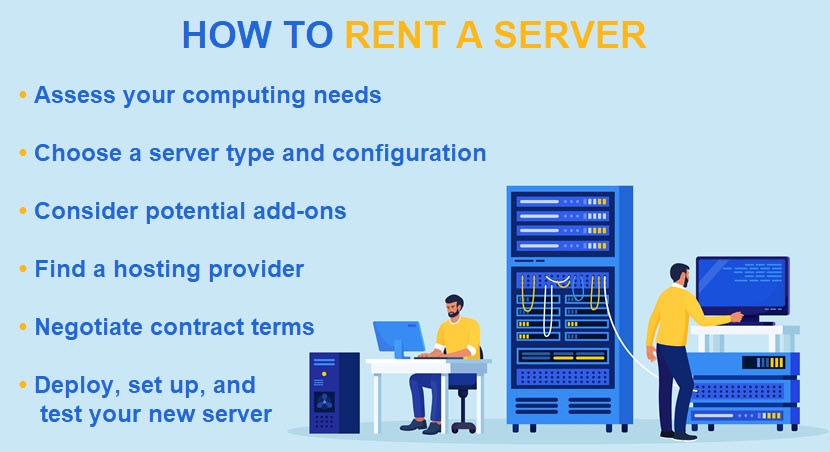
Assess Your Computing Needs
Begin by evaluating the computing requirements of your use case, which you do by performing the following tasks:
- Determine the purpose of the server (e.g., hosting a website, running a business app, storing sensitive user data, performing data analysis, running simulations, etc.).
- Assess the expected workload and traffic that the server will handle. Account for the expected number of concurrent users and data transfer requirements.
- Evaluate the level of your in-house team's technical know-how.
- Conduct an inventory of the software you plan to run on the new server.
- Account for the security and compliance needs of your use case. Determine if you require specific security measures (such as data encryption) and whether you must comply with data-related regulations like GDPR or HIPAA.
- Assess if the use case is susceptible to performance bottlenecks and whether you would benefit from the ability to scale server resources in real-time.
Finally, set the budget for your new server. Assess how much you can allocate to rental costs and additional hosting services.
Choose a Server Type and Configuration
Once you assess computing needs, use that info to determine the most suitable server type. Decide whether a dedicated or cloud server is the better fit (or you need a hybrid-like offering like our BMC):
- Go with a dedicated machine if you require complete control over hardware, have stable and high traffic, and plan to customize the server heavily.
- Choose a cloud server if your main concerns are scalability and controlling hosting costs.
- Go with BMC if you want high performance and near-instant scalability.
Once you choose a server type, determine the specific configuration that aligns with your needs. Consult with your IT team or third-party experts to decide what components (CPU, RAM, storage) your new server will need.
Also, determine what operating system and software you require to run your apps effectively and whether you need custom network configurations.
Consider Potential Add-Ons
Depending on your needs and in-house expertise, it's often a wise choice to invest in additional services when renting a server. Here are a few examples of what providers offer for an extra fee:
- Various managed IT services that help with day-to-day management (e.g., server setup, monitoring, patching, optimizing performance, etc.).
- Additional security services (e.g., DDoS prevention, firewall management, various vulnerability assessments, etc.).
- Load balancing services that distribute incoming network traffic across multiple devices (vital if you rent more than one server).
- Content Delivery Networks (CDNs) cache and deliver content from the server closest to the user base to reduce latency.
- Backup and Disaster Recovery (BDR) services that prevent data loss and help maintain business continuity in times of crisis.
- Performance analytics that provide insights into resource utilization and potential bottlenecks.
- HIPAA-ready servers that are fully compliant and suitable for storing and handling confidential patient data.
Check out what managed services we offer to our clients and get a better sense of what add-ons are available when renting a server.
Find the Right Hosting Provider
Now that you have a clear picture of what server and add-ons you need, it's time to find a hosting provider. Make a list of vendors capable of providing the required server type and configuration, and consider the following factors:
- The geographic location of the hosting provider's data center.
- Their pricing plans and cost structures.
- The track record for reliability (look for customer reviews, testimonials, and online ratings).
- Extra services the provider offers (e.g., caching mechanisms, server optimization techniques, different network connectivity options, etc.).
- Whether the provider's data center has an infrastructure with redundant power and network connectivity to minimize the risk of downtime.
- The level of customer service and whether they provide 24/7 support.
- What security measures the provider has in place, and whether they align with regulations relevant to your use case.
You should also inquire about what each potential provider offers as part of their Service-Level Agreement (SLA). An SLA outlines the level of service the vendor provides (e.g., uptime percentages, response times for support, compensation for service interruptions, etc.), so always ensure the SLA aligns with your server requirements.
Negotiate Contract Terms
Providers typically offer different pricing models, the three most common being monthly, annual, and long-term (multi-year) contracts. Monthly pricing is the most flexible, but longer-term agreements often have discounted rates.
Here are a few tips and best practices to keep in mind when negotiating with a hosting provider:
- Understand the pricing structure for additional resources and consider how these costs fit your budget.
- Providers often have specific bandwidth allocations or data transfer limits. Be aware of any charges for exceeding the set limits.
- Many vendors charge a one-time setup or activation fee when you start renting a server. Consider these fees in your overall budgeting to accurately assess initial costs.
- Inquire about any termination and cancellation policies if you end the contract before its intended duration.
- Watch out for any potential hidden costs, such as additional charges for specific services or add-ons.
- Don't hesitate to ask for discounts, especially if you're considering several providers who meet your requirements.
Sign on with a provider only if the pricing model aligns with your budget and the server offering meets your computing needs.
Deploy and Set Up the New Server
Once you sign up for a service, select the desired configuration, and make payment, the provider provisions the server and shares access credentials. Most dedicated servers are ready for use within 24 hours, while a new cloud server is typically available in a matter of hours.
Once the server is up and running, access the machine via the provided control panel and configure the device according to your needs (or request the provider to do so if you signed on for managed services). Perform the following tasks:
- Install the required operating system and software (e.g., web servers (such as Nginx or Apache), databases (such as PostgreSQL or MySQL), monitoring tools, CMSes, etc.).
- Set and double-check security measures.
- Customize the server settings and network configurations (IP address assignments, DNS settings, firewall rules, etc.) to suit your use case.
- Plan and execute the data migration process using the right data migration tools to move files from an existing server.
Thoroughly test the server's performance, connectivity, and security measures before deploying services. If everything operates correctly, go live, and route your users or clients to the new server.
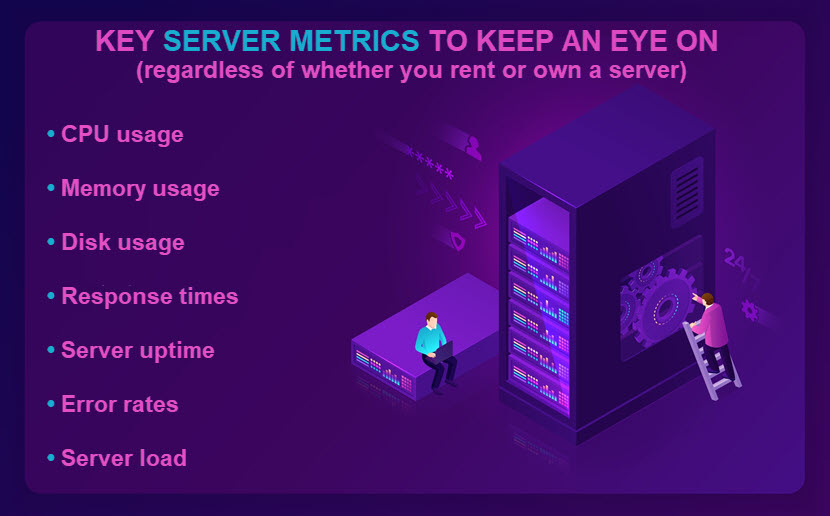
How Much Does It Cost to Rent a Server?
The cost of renting a server depends on several factors, including:
- Server type.
- Requested specifications (amount of CPU, memory, and disk space).
- Network connection speed.
- The location of the hosting data center.
- Duration of the rental.
- Additional services (e.g., server monitoring, technical support, automatic backups, DR, etc.).
- Extra security features.
Here are general price ranges that give a sense of how much you should expect to pay when renting a server:
- Dedicated server prices range from $50 to $350 per month, depending on hardware specifications and the hosting provider.
- Cloud servers are highly flexible and scalable, so prices vary significantly. Fees range from a few cents to several dollars per hour, depending on the specific cloud provider and used resources.
- Our Bare Metal Cloud starts at as low as $0.08 per hour for a 4-core Intel CPU, 16 GB of RAM, and two 240GB SSDs.
Want to learn more about IT prices and budgeting? Check out the following articles:
- Guide to Cloud Computing Costs
- IT Cost Reduction Strategies
- Database Server Prices Explained
- Cloud Cost Management Tools
- Definitive Guide to Colocation Costs
- CapEx vs OpEx: Comparing Capital Expenditures & Operating Expenses
You can also use our cloud pricing calculator to get an instant price estimate for one of our BMC servers.
Make the Right Choices When Renting a Server
Renting a server is not as long a commitment as owning one, but the process still involves a considerable investment of time and effort. The stakes are also high, as whatever you plan to host on the server must be a good fit with the new IT environment. Use this guide to ensure your team does not make any poor decisions that end up causing more issues than benefits in the long run.
